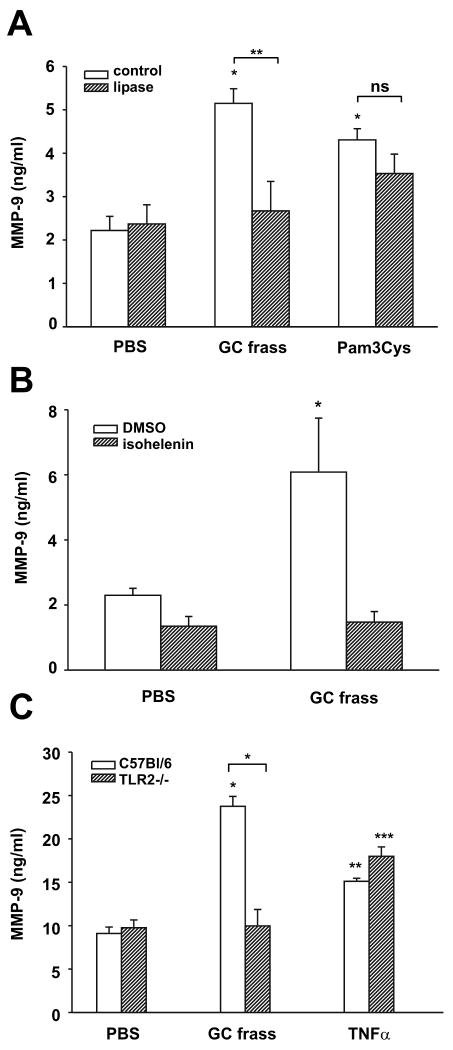Figure 5.
GC frass and a TLR2 agonist induced MMP-9 release from neutrophils. A. HL-60 cells were treated with PBS, GC frass, Pam-3-Cys (1 μg/ml) with and without pretreatment with lipoprotein lipase (1000U/mg) for 18 h. Supernatants were harvested, clarified, and run on a MMP-9 ELISA. Data are expressed as means ± SEM for 3 separate experiments (compared to PBS *p<0.001; compared to GC frass **p=0.008, ns= not significant). B. HL-60 cells were pretreated with DMSO or isohelenin (30 μM) for 1 h prior to treatment with GC frass for 18 h. Supernatants were harvested, clarified, and run on a MMP-9 ELISA. Data are expressed as means ± SEM for 3 separate experiments (compared to PBS *p=0.006). C. Bone marrow-derived neutrophils from wild type (C57Bl/6) and TLR2-deficient mice were harvested and treated ex vivo with PBS or GC frass (300 ng/ml) or TNFα (10 ng/ml). 18 h later, supernatants were collected, clarified and analyzed for MMP-9 by ELISA. These data are representative of 3 separate experiments (compared to PBS *p<0.001, **p=0.04, ***p=0.005; compared to wild type *p>0.001).

